Coronation 10 April 1864 | Name Carlota Mexico Siblings Leopold II of Belgium | |
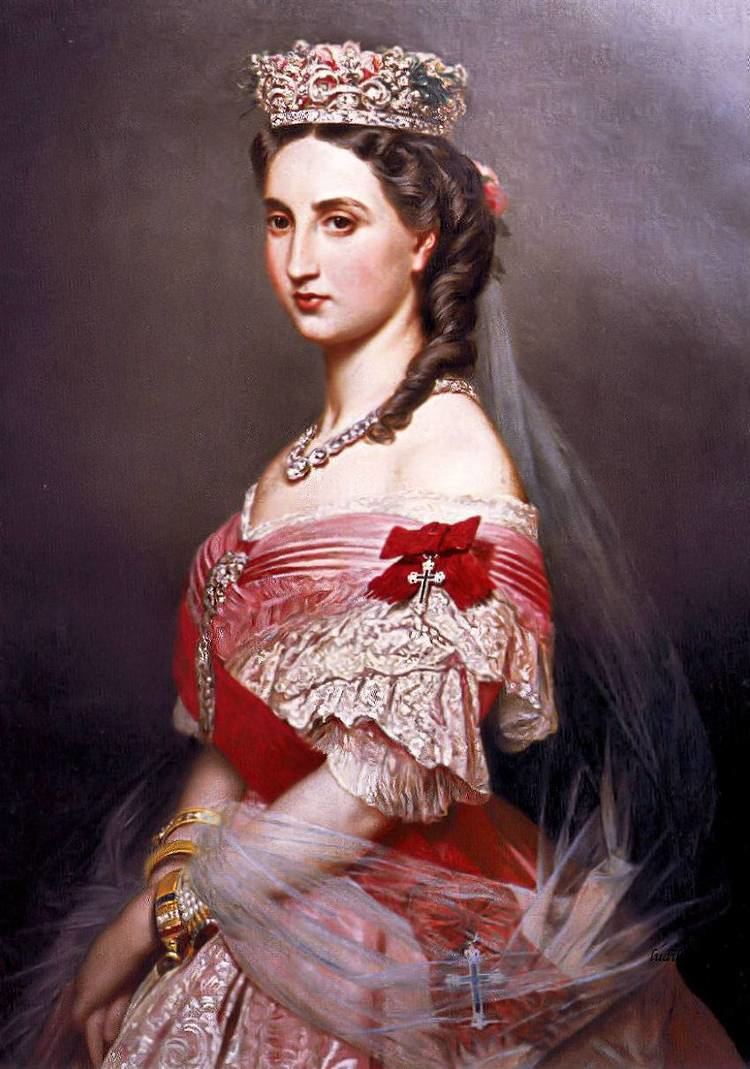 | ||
Tenure 10 April 1864 – 15 May 1867 Mother Princess Louise d'Orleans Spouse Maximilian I of Mexico (m. 1857–1867) Children Agustin de Iturbide y Green, Salvador de Iturbide y Marzan Parents Leopold I of Belgium, Louise of Orleans Similar People Maximilian I of Mexico, Leopold I of Belgium, Louise of Orleans, Princess Charlotte of Wales, Leopold II of Belgium | ||
Charlotte of Mexico- the tragic Empress
Princess Charlotte of Belgium, more commonly known as Carlota of Mexico (7 June 1840 – 19 January 1927) was a Belgian princess who became Empress of Mexico as the wife of Maximilian I of Mexico.
Contents
- Charlotte of Mexico the tragic Empress
- Princess of Belgium
- Archduchess of Austria
- Empress of Mexico
- Family
- Empress Dowager
- Miramare
- Return to Belgium and Death
- Honours
- In popular culture
- References
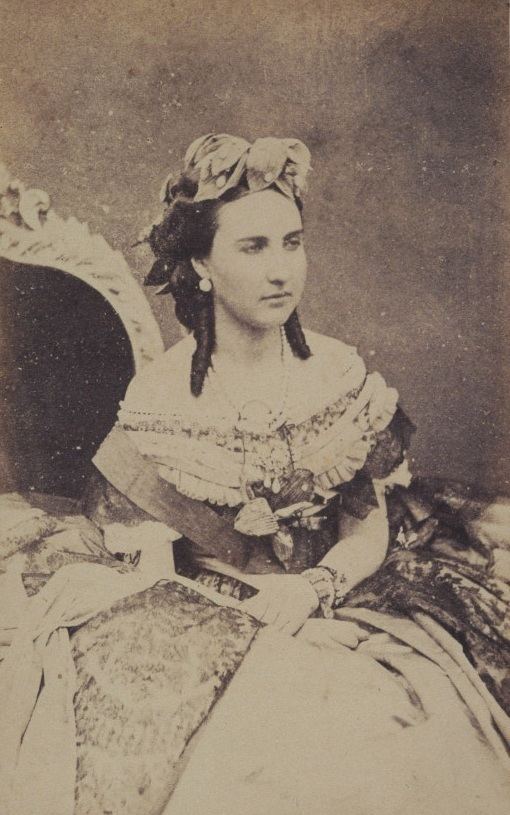
Princess of Belgium
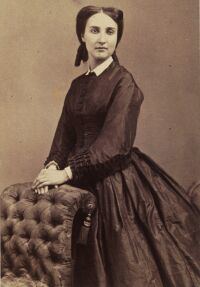
The only daughter of Leopold I, King of the Belgians (1790–1865) by his second wife, Louise of Orléans (1812–1850), Charlotte was born at the Royal Castle of Laeken, Belgium. She was named after her father's first wife, Princess Charlotte of Wales, who had died in childbirth in 1817. Charlotte had three brothers: Louis-Philippe, who died in infancy, Leopold, who on the death of their father became Leopold II of Belgium and Philippe, Count of Flanders. She was also a first cousin to both Queen Victoria and her husband, Prince Albert, as well as Ferdinand II of Portugal. She belonged to the House of Saxe-Coburg and Gotha.
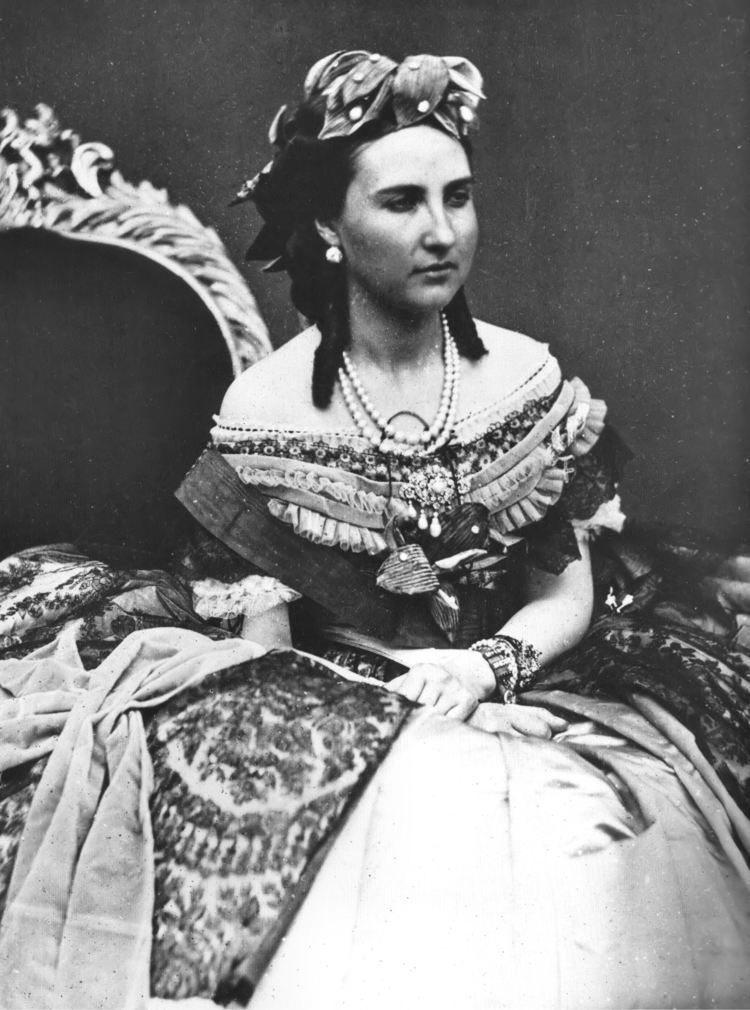
Her favorite grandparent Maria Amalia of the Two Sicilies, Queen of France, was the consort of Louis-Philippe of France, and a niece of Marie Antoinette. Maria Amalia was Charlotte's close confidante, and on her wedding day in 1857, she wore a bracelet with a miniature portrait of her. They regularly corresponded, especially later while Charlotte was in Mexico.
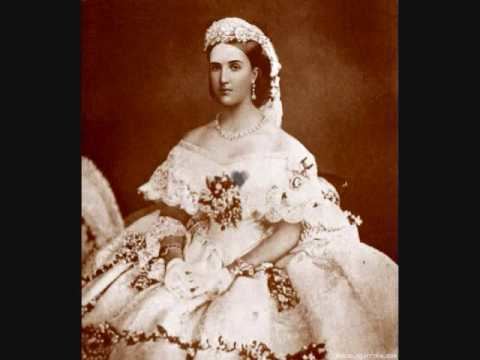
When Charlotte was ten years old, her mother, Louise-Marie, died of tuberculosis and Charlotte was entrusted to the Countess of Hulste, a close family friend. Although young, the princess had her own household; but for a few weeks out of the year, Charlotte stayed in Claremont with Maria Amalia and the rest of her mother's family in exile.
Archduchess of Austria
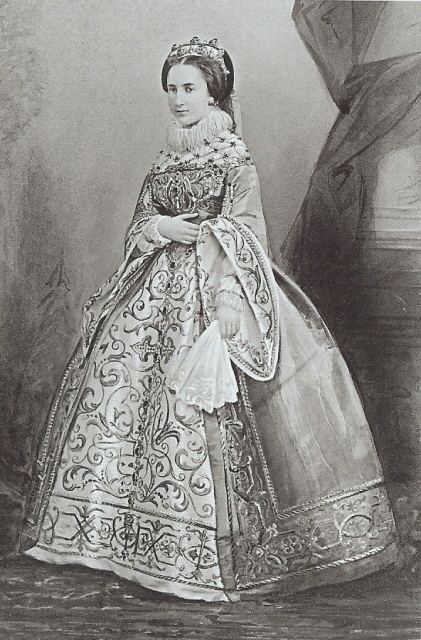
In her youth, Charlotte resembled her mother, and was noted to be a beauty, possessing delicate features. Combined with her status as the only daughter of King Leopold, she was a desirable bride. On 27 July 1857 in Brussels, Charlotte married her second cousin Archduke Maximilian of Austria, the idealistic younger brother of Emperor Franz Joseph I of Austria. Napoleon III gave Charlotte and her husband Maximillian a beautiful bisque bust of Charlotte as a wedding gift. In the Court of Vienna she was much prized by her mother-in-law, Princess Sophie, who saw in her the perfect example of a wife to an Austrian Archduke. This contributed to the strained relationship between Charlotte and Empress Elisabeth of Austria, wife of Franz Joseph whom Sophie treated rather cruelly. It is said that the Charlotte disliked the deep connection that existed between Elisabeth and Maximilian, who were confidantes and shared the same tastes for many things, especially because her sister-in-law was universally admired for her beauty and charms.
Charlotte spent several relatively happy years in Italy as Maximilian's wife while the archduke served as the governor of the Austrian provinces of Lombardy and Venetia. The position was purely nominal, as power rested in the hand of the Emperor and his officers.
Empress of Mexico
In the early 1860s, the ambitious Napoleon III initiated the French intervention in Mexico. France, eager to turn Mexico into a satellite state, searched for a suitable figurehead to serve as the nominal emperor of Mexico. His choice was Maximilian, who held no real power in Italy and was eager for a more challenging role. Against his brother's advice, Maximilian accepted the Mexican crown and the couple sailed for the New World. The imperial couple were crowned at the Catedral Metropolitana in 1864 and chose as their seat Mexico City, making their home in the Neoclassical Chapultepec Castle. As Empress, she took the name of Carlota (Spanish for Charlotte). Carlota tried to take her imperial duties seriously, and even undertook a tour of the remote Yucatán frontier, visiting the ruins of Uxmal.
Only months after the coronation, however, Napoleon III began signaling his abandonment of Maximilian, and the French began to withdraw their troops from Mexico. This strategic pullback was a potentially fatal blow to the infant Mexican monarchy. The situation was exacerbated by a United States blockade that prevented French reinforcements from landing. In a desperate attempt to save her husband's throne, Carlota returned to Europe, seeking assistance for her husband in Paris, Vienna, and finally in Rome from Pope Pius IX. Her efforts failed; she manifested symptoms of paranoia, suffered a profound cognitive and emotional collapse, and never returned to Mexico.
Family
Carlota and Maximilian had no children, but in 1865 the imperial couple adopted Agustín de Iturbide y Green and Salvador de Iturbide y de Marzán—grandsons of Agustín de Iturbide y Arámburu, an earlier emperor of Mexico (r. 1822–23). They gave two-year-old Agustín the title of "His Highness, The Prince of Iturbide"—similar imperial titles were accorded to various members of the child's extended family—but never intended to give him the throne, because he was not of royal blood. Maximilian explained himself that it was all a charade to get his brother Archduke Karl Ludwig of Austria to give him one of his sons as heir. The explosive events of 1867 dashed any hopes of inheritance, and after he grew to adulthood, Agustín renounced all rights to the Mexican throne, served in the Mexican army, and eventually established himself as a professor at Georgetown University.
Rumors persist that, in 1866, Carlota was having an affair with Belgian officer Colonel Alfred Van der Smissen and that she gave birth to a son, Maxime Weygand, in Brussels on 21 January 1867. Weygand refused to confirm or deny the persistent rumor and his parentage remains uncertain. Weygand was a French military commander in both World Wars I and II.
Empress Dowager
The empress was sent to Europe in 1866 to find help with Family. She was received both by the French Emperor and later by the Pope in audience, without success. She was possessed by the idea that she would be killed by poison and refused to eat normal food. Her secretary Batti was horrified when she drank public water from the fountains in Rome, she even bought a cat to taste her food. King Leopold was shocked and sent the count of Flanders to Italy to visit his sister. The Empress who was very depressed and unstable took her court to Miramare, Maximilian's castle near Trieste, Italy, on advice of her brother the Count of Flanders. Dr. Riedel, Director of the Lunatic Asylum of Vienna visited her, to report the Emperor.
Miramare
While the Empress was resting the Emperor of Austria and the King of Belgium sent delegations to Miramare Castle. The Count of Bombelles, and Dr Von Jilek a friend of the Emperor of Mexico were sent to Miramare. The King of Belgium sent baron Auguste Goffinet on mission to get his sister home. Emperor Maximilian was captured by Mexican Republican forces and executed on 19 June 1867. Now archduchess again, she was obedient to the Austrian court, and Count Karl of Bombelles tried to keep her in Miramare. Discussions between the imperial court and Brussels became more important, because of the heritage. The emperor placed Charlotte under custody of his brother Archduke Karl Ludwig of Austria. The king sent his wife to Vienna to visit her Cousin emperor Franz-Josef and take care of Charlotte.
There she was kept in observance by a team of medical and imperial guards. The king sent Jan Frans Bulckens 1813–1876 Psychiatrist of Belgium to his sister. The medical team decided that the empress could not be told of the execution of her husband. With medical approval the Queen gave her sister-in-law a faked Telegram, from her husband to come back to Brussels.
This worked and the empress-dowager left Miramare for the last time. Together with her sister-in law, Queen Marie Henriette and the Belgian delegation they left for Belgium. After she left Miramare was returned property to the imperial Court.
Historians think that after the death of the Emperor in Mexico, Charlotte only had status of a rich dowager. For the Viennese court and imperial family it was of financial interest to keep her in Miramare. There her fortune was guarded under care of Eduard von Radonetz, the prefect of Miramare. When she was in Belgium the Viennese court would need to pay her dowry to Leopold in Belgium. This theory is confirmed by André Castelot.
Return to Belgium and Death
At the end the Austrian delegation allowed the empress and her sister in law leave to Belgium where the king gifted her court at Bouchout Castle in Meise, Belgium. During the final years of his life the king cared for his sister. The dowager wrote notes of profound gratitude of the care she received of her brother and nephews.
During World War I, her Belgian estate was surrounded by the occupying German army, but the estate itself was sacrosanct because Austria-Hungary was one of Germany's chief allies and she was the widowed sister-in-law of the Austrian emperor.
As Carlota's illness progressed, her paranoia faded. She remained deeply in love with her husband. After his death, she cherished all of the surviving possessions they had enjoyed in common. The bias of the historiography of the time makes it difficult to assess to what extent she suffered from alleged mental conditions such as psychosis, paranoia and monomania.
Carlota died of pneumonia brought on by influenza at Bouchout Castle on 19 January 1927, and is buried in the Royal Crypt of the Church of Our Lady of Laeken.
She was the last surviving child of Leopold I.
Honours
Carlota of Mexico received the following honours:
